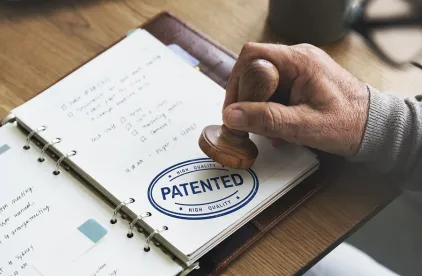Congress created the first statutory private federal cause of action for trade secret misappropriation when it enacted the Defend Trade Secrets Act (“DTSA”) on May 11, 2016. Although the DTSA has some material differences from existing state laws (which are predominately variations of the Uniform Trade Secrets Act (“UTSA”)),[1] the statute generally extends similar protections to those afforded by most states. Nonetheless, the ability to enforce trade secret rights in federal courts and achieve a consistent application of trade secret law across state borders generated a lot of interest amongst employers throughout the United States.
Now, more than a year since its enactment, the DTSA is being shaped and interpreted by various federal court decisions and enforcement trends are emerging. This Alert provides some insight into these new trends in DTSA litigation, including how federal courts have: (1) interpreted DTSA claims premised on theories of continuing misappropriation; (2) required a connection between alleged trade secrets and interstate commerce; and (3) applied the inevitable disclosure doctrine to DTSA claims.
Background
Under the DTSA, an employer may file suit for the misappropriation of trade secrets related to interstate commerce.[2] Information is protectable as a trade secret under the DTSA if the owner has “taken reasonable measures to keep such information secret” and “the information derives independent economic value, actual or potential, from not being generally known to, and not being readily ascertainable through proper means by, another person who can obtain economic value from the disclosure or use of the information.”[3] There are two methods by which plaintiffs may show misappropriation. First, a plaintiff may allege acquisition of a trade secret by a person who knows or has reason to know that the trade secret was acquired by improper means.[4] Second, a plaintiff may allege disclosure or use of a trade secret without consent by a person who used improper means to acquire the trade secret or knows or had reason to know that the trade secret was acquired by improper means.[5] The DTSA provides wide-ranging remedies for misappropriation, which include civil seizure of property, injunctive relief, monetary damages for actual loss, monetary damages for unjust enrichment, reasonable royalties, exemplary damages, and attorney’s fees.[6]
Continuing Misappropriation
The DTSA provides a cause of action only for acts occurring on or after its May 11, 2016 enactment date.[7] Over the last sixteen months, most courts have held that plaintiffs may bring claims based on wrongful acquisition of trade secrets that occurred prior to May 11, 2016, if the defendants continued to use the trade secrets after the enactment date.[8] As one federal court recognized, “[n]othing suggests that the DTSA forecloses a use-based theory simply because the trade secret being used was misappropriated before the DTSA’s enactment.”[9] This “use-based” theory of liability involving acquisition of the alleged trade secrets prior to the enactment date is frequently referred to as “continuing misappropriation.”
To explain why the DTSA allows claims based on continuing misappropriation, courts have regularly compared the language of the UTSA with the language of the DTSA. The UTSA states that “[w]ith respect to a continuing misappropriation that began prior to the [UTSA’s] effective date, the [UTSA] does not apply to the continuing misappropriation that occurs after the effective date.”[10] A number of state trade secret laws contain similar provisions prohibiting continuing misappropriation claims.[11] Because the DTSA does not contain any such language, courts have reasoned that continuing misappropriation claims are permissible.[12]
This trend in allowing claims premised on continuing misappropriation potentially makes it easier for plaintiffs to plead a DTSA cause of action and gain access to the federal courts. However, to successfully bring a DTSA claim, plaintiffs must allege that at least some misappropriation occurred after May 11, 2016. Courts have granted motions to dismiss DTSA claims that fail to allege any specific instances of misappropriation occurring after the DTSA’s enactment date.[13]
The Interstate Commerce Requirement
Unlike state trade secret laws, the DTSA allows a claim only if the alleged trade secrets are “related to a product or service used in, or intended for use in, interstate or foreign commerce.”[14] Courts have taken this jurisdictional requirement seriously at the pleading stage. If a plaintiff fails to allege a nexus between the alleged trade secrets and interstate or foreign commerce, courts have been willing to grant dismissal.[15] Further, even if a defendant does not move for dismissal on these grounds, federal courts have an independent obligation to raise the issue and decide if there is a sufficient nexus between the alleged trade secrets and interstate commerce in order to exercise subject-matter jurisdiction.[16]
To avoid dismissal, plaintiffs should allege specific facts that demonstrate a clear connection between the alleged trade secrets and interstate commerce. For example, in Grow Fin. Fed. Credit Union v. GTE Fed. Credit Union, the complaint alleged that the plaintiff was a “federally chartered credit union” that was “subject to the Gramm-Leach-Bliley Act of 1999 and the National Credit Union’s rules and regulations for privacy and confidentiality.”[17] The complaint also alleged that the plaintiff “provide[ed] various financial products and services to its members” and used the alleged trade secrets “in connection with the provision of its products and services in interstate U.S. commerce.”[18] The Middle District of Florida held that, at the pleading stage, these allegations were sufficient to “establish a nexus between the trade secrets that were allegedly misappropriated and interstate commerce.”[19]
The Inevitable Disclosure Doctrine
Prior to discovery, it is often difficult for an employer to show that a former employee disclosed trade secrets to a competitor or that a competitor has used such trade secrets. Some jurisdictions recognize this difficulty and have held that a “plaintiff may prove a claim of trade secret misappropriation by demonstrating that defendant’s new employment will inevitably lead him to rely on the plaintiff’s trade secrets.”[20] This method of proving trade secret liability is commonly known as the “inevitable disclosure doctrine.” In deciding whether there could be an inevitable disclosure of the plaintiff’s trade secrets, courts consider three factors: “(1) the level of competition between the former employer and the new employer; (2) whether the employee’s position with the new employer is comparable to the position he held with the former employer; and (3) the actions the new employer has taken to prevent the former employee from using or disclosing trade secrets of the former employer.”[21]
When the DTSA was enacted, many academics and commentators believed Congress expressly chose not to recognize the inevitable disclosure doctrine. Specifically, the DTSA authorizes an injunction for a threatened misappropriation, but the injunction cannot “prevent a person from entering into an employment relationship” and “conditions placed on such employment shall be based on evidence of threatened misappropriation and not merely on the information the person knows.”[22] This initially was interpreted to mean that the inevitable disclosure doctrine would not be applicable to claims brought under the DTSA. At least some litigants have attempted to make this argument.[23]
Some federal courts have disagreed with this interpretation of the DTSA. A trio of recent decisions from the Northern District of Illinois has applied the inevitable disclosure doctrine to DTSA claims.[24] In Molon Motor & Coil Corp. v. Nidec Motor Corp., the court denied the plaintiff’s motion to dismiss because there was “enough to trigger the circumstantial inference that the trade secrets inevitably would be disclosed by [the former employee] to [the defendant-competitor].”[25] Similarly, in Mickey’s Linen v. Fischer, the court granted the plaintiff’s motion for a preliminary injunction after finding that the defendant-former employee would “inevitably use or disclose [the plaintiff’s] trade secrets during his employment with [a competitor].”[26]
While plaintiff-employers may be able to take advantage of the inevitable disclosure doctrine to allege DTSA claims, notably all of the decisions on this issue have come from the Northern District of Illinois and have also involved claims under the Illinois Trade Secrets Act. Illinois has been a longstanding supporter of the inevitable disclosure doctrine. Its adoption of the doctrine can be traced back to the seminal Seventh Circuit decision in PepsiCo, Inc. v. Redmond, which involved an Illinois Trade Secrets Act claim.[27] But, unlike Illinois, some states have rejected the inevitable disclosure doctrine or at a minimum do not favor it.[28] It is unclear if federal courts in these jurisdictions will rely upon the recent Northern District of Illinois case law or instead turn to their respective state law interpretations of the inevitable disclosure doctrine when addressing DTSA claims.
Conclusion
These growing trends provide increased clarity on the scope and requirements of the DTSA. Employers should be aware of the timing of alleged misappropriation, whether alleged trade secrets are related to interstate commerce, and how the inevitable disclosure doctrine could impact current or potential litigation. By being mindful of these trends and continuing to monitor DTSA cases, employers can better protect their intellectual property rights.
1] The UTSA was published by the Uniform law Commission in 1979 and amended in 1985. It has been adopted in some form in forty-eight different states.
[2] 18 U.S.C. § 1836(b)(1).
[3] 18 U.S.C. § 1839(2).
[4] 18 U.S.C. § 1839(5).
[5] Id.
[6] 18 U.S.C. § 1836(b)(2) and (3). For additional background information on the DTSA, please see our alert titled Several Months Into Having Federal Protection for Trade Secrets: What Are We Learning?
[7] Defend Trade Secrets Act of 2016, PL 114-153, May 11, 2016, 130 Stat 376.
[8] Brand Energy & Infrastructure Servs., Inc. v. Irex Contracting Grp., No. CV 16-2499, 2017 WL 1105648, at *4 (E.D. Pa. Mar. 24, 2017) (“Other district courts have analyzed the applicability of the DTSA to misappropriations that occurred before the DTSA was enacted. These courts have all held that the DTSA applies to misappropriations that began prior to the DTSA’s enactment if the misappropriation continues to occur after the enactment date.”); Adams Arms, LLC v. Unified Weapon Sys., Inc., No. 8:16-CV-1503-T-33AEP, 2016 WL 5391394, at *6 (M.D. Fla. Sept. 27, 2016) (“[T]he Court finds that [the plaintiff] may state a plausible claim for relief, if [the plaintiff] sufficiently alleges a prohibited ‘act’ occurring after May 11, 2016.”).
[9] Physician’s Surrogacy, Inc. v. German, No. 17CV0718-MMA (WVG), 2017 WL 3622329, at *9 (S.D. Cal. Aug. 23, 2017) (quoting Cave Consulting Grp., Inc. v. Truven Health Analytics Inc., No. 15-CV-02177-SI, 2017 WL 1436044, at *4 (N.D. Cal. Apr. 24, 2017)).
[10] UTSA § 11.
[11] E.g., R.I. Gen. Laws § 6-41-11 (“This chapter takes effect on July 1, 1986, and does not apply to misappropriation occurring prior to July 1, 1986. With respect to a continuing misappropriation that began prior to July 1, 1986, the chapter also does not apply to the continuing misappropriation that occurs after July 1, 1986.”); Va. Code § 59.1-343 (containing similar language).
[12] See Brand Energy, 2017 WL 1105648, at *3–4 (denying motion to dismiss and allowing continuing misappropriation theory after comparing the DTSA to the UTSA); Adams Arms, 2016 WL 5391394, at *5–7 (same).
[13] E.g., Physician’s Surrogacy, 2017 WL 3622329, at *8–9 (dismissing DTSA claim because it lacked “sufficient detail with regard to any conduct that may have occurred after May 11, 2016”); Cave Consulting, 2017 WL 1436044, at *5 (dismissing DTSA claim because the “plaintiff [made] no specific allegations that defendant used the alleged trade secrets after the DTSA’s May 11, 2016 enactment”).
[14] 18 U.S.C. § 1836(b)(1).
[15] Government Employees Insurance Co., et al., v. Scott P. Nealey, et al., No. CV 17-807, 2017 WL 2572519, at *13 (E.D. Pa. June 13, 2017) (“[The plaintiffs’] complaint does not allege any nexus between interstate or foreign commerce and the alleged trade secrets . . . [t]his deficiency, in itself, warrants dismissal of plaintiffs’ DTSA claim.”); Hydrogen Master Rights, Ltd. v. Weston, 228 F. Supp. 3d 320, 338 (D. Del. 2017) (dismissing DTSA claims in part because the “complaint fail[ed] to allege any nexus between interstate or foreign commerce” and the allegedly misappropriated trade secrets).
[16] Government Employees Insurance, 2017 WL 2572519, at *12.
[17] No. 8:17-CV-1239-T-30JSS, 2017 WL 3492707, at *3 (M.D. Fla. Aug. 15, 2017).
[18] Id.
[19] Id.
[20] PepsiCo, Inc. v. Redmond, 54 F.3d 1262, 1269 (7th Cir. 1995).
[21] Molon Motor & Coil Corp. v. Nidec Motor Corp., No. 16 C 03545, 2017 WL 1954531, at *5 (N.D. Ill. May 11, 2017) (quoting Saban v. Caremark Rx, L.L.C., 780 F. Supp. 2d 700, 734–35 (N.D. Ill. 2011)).
[22] 18 U.S.C. § 1836(3)(A)(i) (emphasis added).
[23] Xoran Holdings LLC v. Luick, No. 16-13703, 2017 WL 4039178, at *6 (E.D. Mich. Sept. 13, 2017) (the defendants cited 18 U.S.C. § 1839(b)(3)(A)(i) and argued that the inevitable disclosure doctrine was “rejected by Congress”, but the court did not address this issue).
[24] Mickey’s Linen v. Fischer, No. 17 C 2154, 2017 WL 3970593, at *12–13 (N.D. Ill. Sept. 8, 2017); Cortz, Inc. v. Doheny Enterprises, Inc., No. 17 C 2187, 2017 WL 2958071, at *11–12 (N.D. Ill. July 11, 2017); Molon Motor, 2017 WL 1954531, at *5–7.
[25] Molon Motor, 2017 WL 1954531, at *7. For additional information on the Molon Motor decision and its application of the inevitable disclosure doctrine, please see our alert titled It’s Inevitable: Pleading Trade Secret Misappropriation Under the Defend Trade Secrets Act of 2016.
[26] Mickey’s Linen v. Fischer, No. 17 C 2154, 2017 WL 3970593, at *13 (N.D. Ill. Sept. 8, 2017).
[27] 54 F.3d at 1267–1272 (affirming district court’s grant of preliminary injunction after finding that defendant-former employee would inevitably rely upon trade secrets from plaintiff former-employer in his new position at a competitor of the plaintiff).
[28] E.g., Bayer Corp. v. Roche Molecular Sys., Inc., 72 F. Supp. 2d 1111, 1120 (N.D. Cal. 1999) (“[T]he Court holds that California trade-secrets law does not recognize the theory of inevitable disclosure[.]”); LeJeune v. Coin Acceptors, Inc., 849 A.2d 451, 471 (Md. 2004) (“[W]e conclude that the theory of ‘inevitable disclosure’ cannot serve as a basis for granting a plaintiff injunctive relief under [the Maryland Uniform Trade Secrets Act].”); Gov’t Tech. Servs., Inc. v. IntelliSys Tech. Corp., 1999 WL 1499548, at *1 (Va. Cir. 1999) (“Virginia does not recognize the inevitable disclosure doctrine.”).






 />i
/>i
